Venerated in Roman Catholicism Name Catherine Laboure | Role Saint | |
 | ||
Born Zoe LaboureMay 2, 1806Fain-les-Moutiers, Cote-d\'Or, France ( 1806-05-02 ) Feast 25 November28 November31 December Died December 31, 1876, Paris, France Parents Pierre Laboure, Louise Madeleine Gontard Similar People Vincent de Paul, Louise de Marillac, Bernadette Soubirous, Catherine of Siena, Rosalie Rendu | ||
St catherine laboure and the miraculous medal
Saint Catherine Labouré, D.C.. (May 2, 1806 – December 31, 1876) (born Zoé Labouré) was a member of the Daughters of Charity of Saint Vincent de Paul and a Marian visionary who relayed the request from the Blessed Virgin Mary to create the famous Miraculous Medal of Our Lady of Graces worn by millions of Christians, both Roman Catholic and Protestant.
Contents
- St catherine laboure and the miraculous medal
- Saint catherine laboure the movie
- Life
- Saint Vincent de Paul
- Blessed Virgin Mary
- Death and legacy
- St catherine labour
- References
Saint catherine laboure the movie
Life
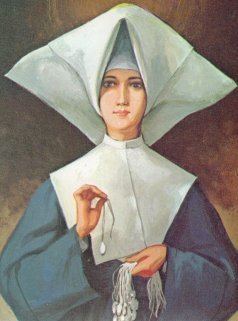
She was born in the Burgundy region of France to Pierre Labouré, a farmer, and Louise Madeleine Gontard, the ninth of 11 living children. Catherine's mother died on October 9, 1815, when Catherine was just nine years old. It is said that after her mother's funeral, Catherine picked up a statue of the Blessed Virgin Mary and kissed it saying, "Now you will be my mother." Her father's sister offered to care for his two youngest children, Catherine and Tonine. After he agreed, the sisters moved to their aunt's house at Saint-Rémy, a village nine kilometers from their home.

She was extremely devout, of a somewhat romantic nature, given to visions and intuitive insights. As a young woman, she became a member of the nursing order founded by Saint Vincent de Paul. She chose the Daughters of Charity after a dream about St. Vincent De Paul.
Saint Vincent de Paul
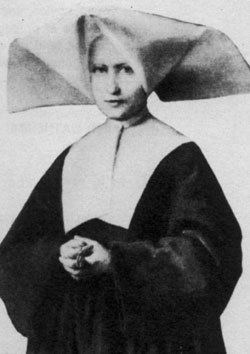
In April 1830, the remains of Saint Vincent de Paul were translated to the Vincentian church in Paris. The solemnities included a novena. On three successive evenings, upon returning from the church to the Rue du Bac, Catherine reportedly experienced in the convent chapel, a vision of what she took to be the heart of St. Vincent above a shrine containing a relic of bone from his right arm. Each time the heart appeared a different color, white, red, and crimson. She interpreted this to mean that the Vincentian communities would prosper, and that there would be a change of government. The convent chaplain advised her to forget the matter.
Blessed Virgin Mary
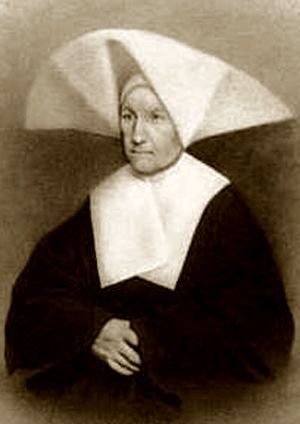
Sister Catherine Labouré stated that on July 19, 1830, the eve of the feast of Saint Vincent de Paul, she woke up after hearing the voice of a child calling her to the chapel, where she heard the Virgin Mary say to her, "God wishes to charge you with a mission. You will be contradicted, but do not fear; you will have the grace to do what is necessary. Tell your spiritual director all that passes within you. Times are evil in France and in the world."
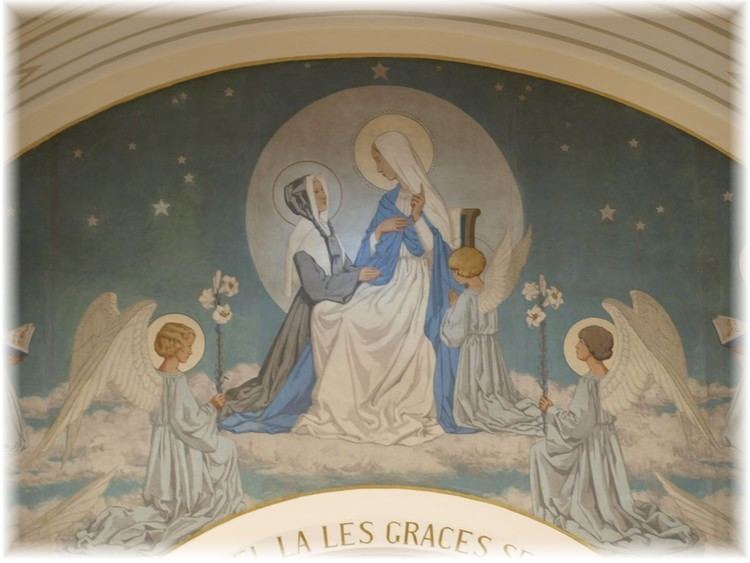
On November 27, 1830, Catherine reported that the Blessed Mother returned to her during evening meditations. She displayed herself inside an oval frame, standing upon a globe, rays of light came out of her hands in the direction of a globe. Around the margin of the frame appeared the words "O Mary, conceived without sin, pray for us who have recourse to thee." As Catherine watched, the frame seemed to rotate, showing a circle of twelve stars, a large letter M surmounted by a cross, and the stylized Sacred Heart of Jesus and Immaculate Heart of Mary underneath. Asked why some of the rays of light did not reach the Earth, Mary reportedly replied "Those are the graces for which people forget to ask." Catherine then heard Mary ask her to take these images to her father confessor, telling him that they should be put on medallions. "All who wear them will receive great graces."
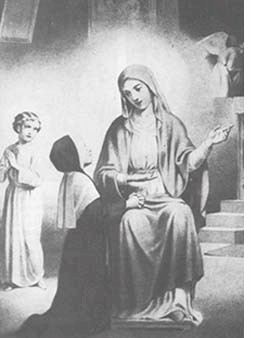
Sister Catherine did so, and after two years' worth of investigation and observation of Catherine's normal daily behavior, the priest took the information to his archbishop without revealing Catherine's identity. The request was approved and the design of the medallions was commissioned through French goldsmith Adrien Vachette. They proved to be exceedingly popular. The dogma of the Immaculate Conception had not yet been officially promulgated, but the medal with its "conceived without sin" slogan was influential in popular approval of the idea. Pope John Paul II used a slight variation of the reverse image as his coat of arms, a plain cross with an M in the lower right quadrant of the shield.
Death and legacy
Sister Catherine spent the next forty years caring for the aged and infirm. For this she is called the patroness of seniors. She died on December 31, 1876 at the age of seventy. Her body is encased in glass beneath the side altar at 140 Rue du Bac, Paris.
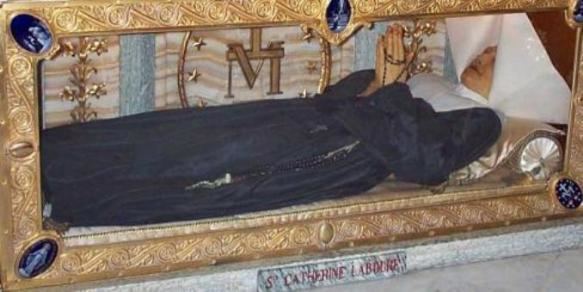
Catherine Labouré's cause for sainthood was declared upon discovering her body was incorrupt, which currently lies in the Chapel of Our Lady of the Miraculous Medal. She was beatified on May 28, 1933 by Pope Pius XI and canonized on July 27, 1947 by Pope Pius XII.
Her feast day is observed on November 28 according to the liturgical calendar of the Congregation of the Mission, the Daughters of Charity of Saint Vincent de Paul and the Roman Catholic Archdiocese of Paris. She is listed in the Martyrologium Romanum for December 31.
